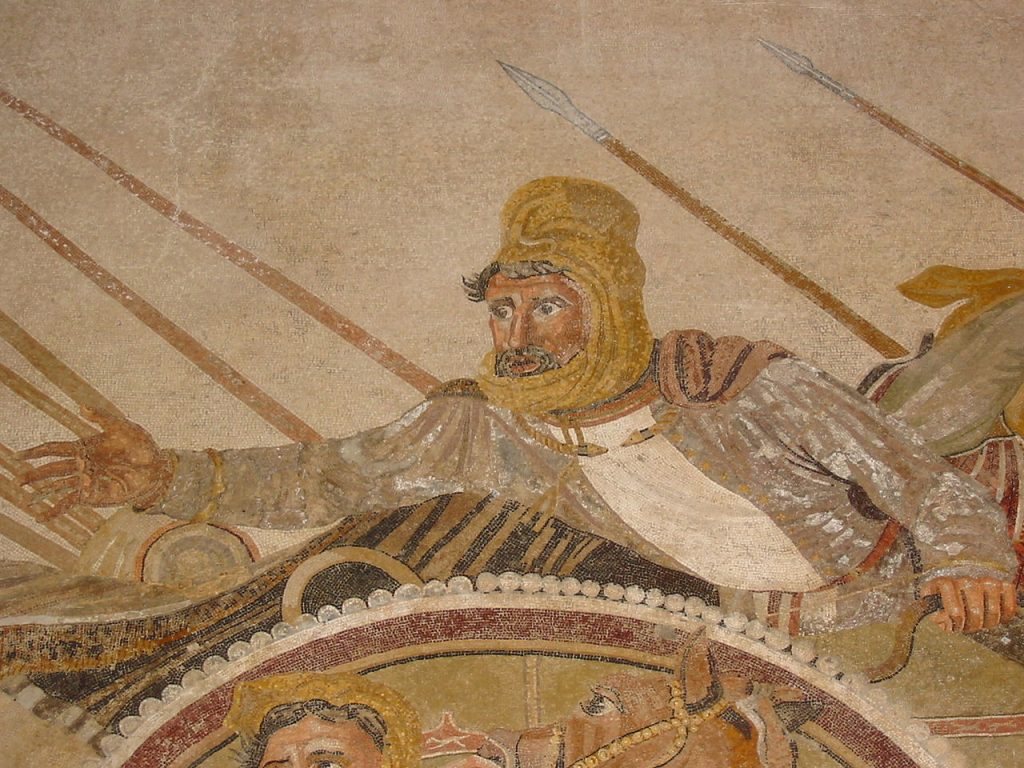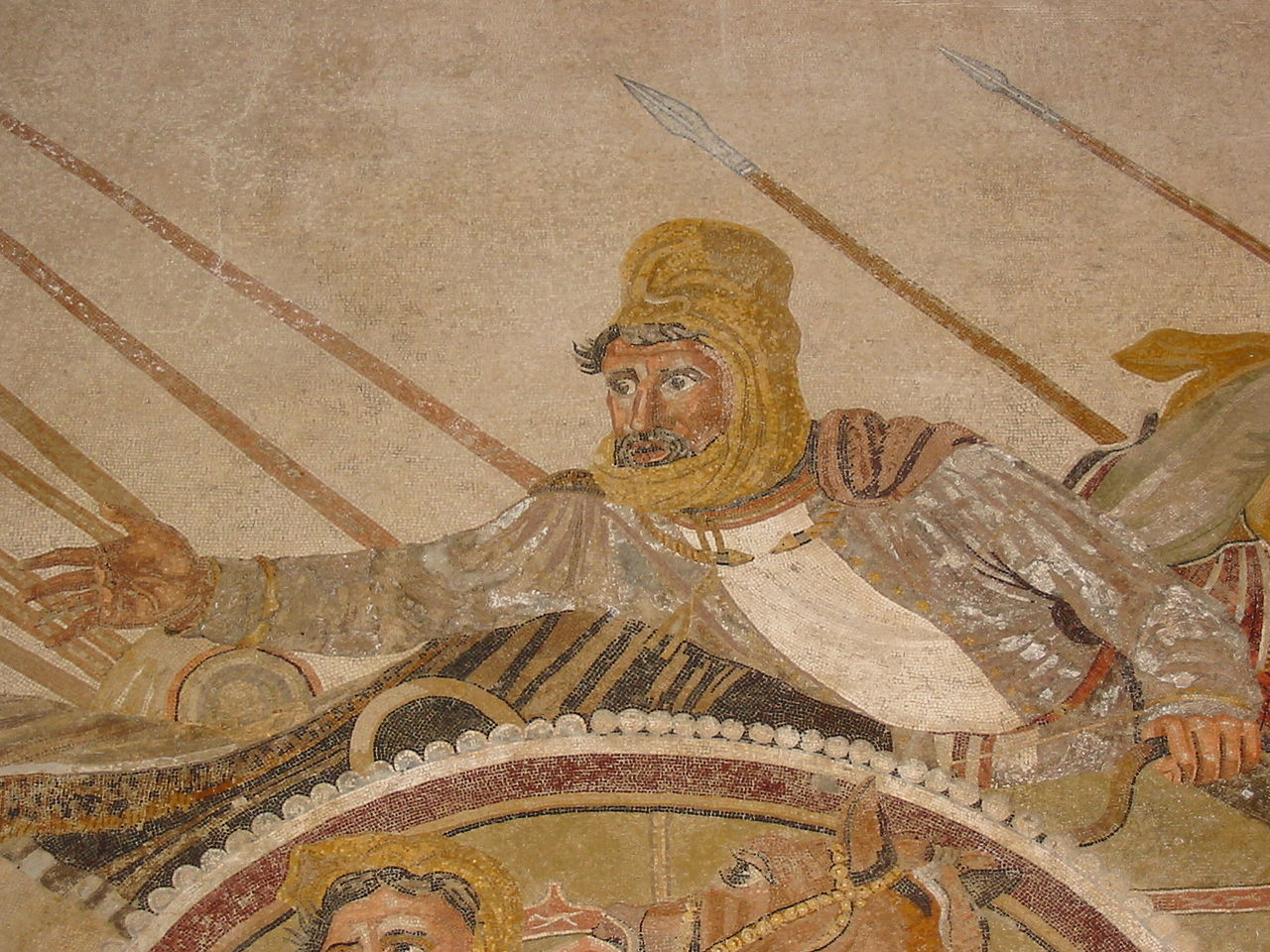
“What fascinated us is that the memory of the Persian Empire disappears after Alexander the Great,” Strootman told me. “All of a sudden in the 2nd century they invent the iconography of the Persian Empire.”
Recent movies, especially 300 from 2006, and Alexander from 2004, have made the Persian Empire familiar to the general public. The attempt by Xerxes to subjugate Greece in 480 BCE is perhaps the most iconic event of that ancient time. Xerxes was the 4th king of the Achaemenid dynasty that founded what we think of as the Persian Empire. Darius III was the last king, defeated when Alexander smashed his way through it, instituting a new ‘Hellenic’ phase with the Greek language as the lingua franca of the empire. But Alexander died in 323 BC, and in time the Achaemenid kings were all but forgotten, even in the very lands they ruled.
As Albert de Jong writes in his chapter, “The Sasanians seems to have been wholly unaware of the Achaemenids (even though they rose from the exact area where the Achaemenids had once been based).” The Sasanians ruled from 224 to 651 AD; it was the last period of a different Persian Empire before the rise of Islam. It covered a huge area including modern-day Iran, Iraq, Egypt and much of Afghanistan.
The title of the book signals the new direction Strootman and his 21 authors are taking the study of the Persian Empire.
“Persianism is a new term which deals with recreating Persian identities. In the West,” Strootman told me, “a cultural memory of Persia was created by archaeologists and historians.” As author Matthew Canepa explains, “Persianism is a useful critical term in that it focuses specifically on the use and transformation of the Achaemenid royal legacy.”
Two authors give concrete examples. Margaret Miller examines a building that once stood on the east of the Acropolis in Athens. Called the Odeion, it was built around 450 BCE, and is unique in all of Greece: “The only way that the Odeion’s peculiar features can be explained is as a deliberate quotation of the Persian hypostyle hall.” What it represents remains a mystery. Miller suggests it may be a victory monument (celebrating the defeat of Xerxes), or “an imperial structure that gains its authority through (mis-) quoting power architecture of the Persian Empire.”
Canepa gives another such example. The Armenian King Orontes IV, who died in 200 BCE, moved his royal residence onto a mountaintop. It consisted of a forested hunting preserve, paradise plantation and villa. His new city, writes Canepa, “did not resemble a self-contained and functionally divided Hellenistic city. Rather, it was organized on a plan of a Persian royal or satrapal residence.” Such an estate, he writes, “especially when named in the manner of an Achaemenid paradise, are a ‘Persianiam’ that claims direct filiation with Persian kingship.”
The concluding chapter, a 54-page exposition of considerable importance by H. Rahim Shayegan, highlights an aspect of Persianism at the opposite end of the spectrum from the one just mentioned. He looks at intangible patterns, such as the inscriptions used in both the Achaemenid and Sasanian periods. Even though they are separated by a thousand years, they exhibit “organisational analogies” that can hardly be attributed to serendipity. Even though the Sasanians operating within these “intellectual patterns of thought” did so unaware of the fact they were continuing an ancient tradition, Shayegan identifies this as “yet another field of reception, and ought to be an integral part of our discussions about Persianism.”
Strootman explained the work in this book has engendered thinking about what Hellenism really is. We “bring into view the Iranian nobility of the Hellenistic period. It is a new paradigm of study. No longer do we think in terms of decline but of resilience and change. The Empire transformed into indirect rule through client kings.”
As he states in the book, “the world of the 4th-century BCE Aegean satrap-kings is the primary historical context in which the 4th-century Hellenistic monarchy developed.” This was known as the Seleucid empire, founded on the death of Alexander by his general Seleucis. It lasted until 63BCE.
There are many other aspects considered by the other contributing authors, including several fascinating examinations of representations on antique coinage and a survey of walls that were built in the 6th century. This includes “the longest wall built in antiquity.” At 195km, it is longer than Hadrian’s Wall separating England from Scotland. This one runs from the Caspian Sea to the mountains, reminding us that walls are just as relevant today (US/Mexico) as they were then.
This book will, as it sets out to do, certainly serve as the foundation for a wide-ranging reevaluation of Persian studies. It is unfortunate that no capsule biography of each contributor is given; not even their academic affiliations or contact data is included; the book also lacks an Index. The book is entirely in English, except for one chapter in German, which certainly should have been translated into the international language of science.
Also unfortunately, the book is replete with typos: far too many to list. I will just mention two from the Introduction. The very first line of the Introduction has the word prize spelled ‘price.’ On pg. 31, we read “we hope this book will be also be able to provide food for thought.”
Persianism in Antiquity, edited by Rolf Strootman & Miguel Versluys (557 pages;incl a 98-page bibliography) is 84 euros from the German publisher Franz Steiner. This is the 25th volume in the publishers’ Oriens and Occidens series.
